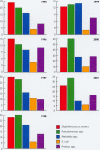Abstract
BACKGROUND: Wound care is a very important aspect of surgical care. Knowledge of the epidemiology of bacterial pathogens associated with infected wounds is critical in formulating policies on infection control. OBJECTIVE: To determine the prevalence of bacterial pathogens in wounds from various units of a Nigerian tertiary hospital orthopedics and traumatology department, as well as changes over time, if any, in the prevalence rates. METHODS: A retrospective study was conducted using laboratory records from 1995 to 2001. RESULTS: 670 bacterial isolates from 629 patients were studied. The most common isolates were Pseudomonas spp.-29.9%, and Staphylococcus aureus (S. aureus)--27.5%. Others were Klebsiella spp.-18.5%, Proteus spp.--15.1%, and Escherichia coli (E. coli)--7%. The least common were Streptococci--2%, and Enterococci--0.3%. Pseudomonas spp. accounted for 33% of isolates in the adult wards, while S. aureus was 21% and E. coli 8%. The pattem is similar in the pediatric ward (33.9%, 23.7%, and 8.5%, respectively) and Intensive Care Unit (ICU) (40%, 6.7%, and zero, respectively). S. aureus was the most common isolate from the orthopedic clinics (OPD) 40%, and the A&E (35%), followed by pseudomonas spp.-25.4% and 19%, respectively. The odds of a wound being infected with Gram-negative bacilli among inpatients compared with outpatients is 2.44 (95% CL = 1.72-3.47; P = 0.0000003) Between 1995 and 2001, the prevalence of Gram-positive bacteria decreased, while that of Gram-negative bacilli increased. The prevalence of Pseudomonas spp. and S. aureus also increased. CONCLUSION: Wounds from patients in the orthopedics and trauma services are more frequently infected with Gram-negative bacilli than by Gram-positive bacteria. The prevalence of the former is higher in the ICU and least in the OPD. Pseudomonas spp. was the most common isolate. It was more common among inpatients, while S. aureus was more common among outpatients. The prevalence of Pseudomonas spp. in particular and Gram-negative bacilli in general is increasing.
Full text
PDF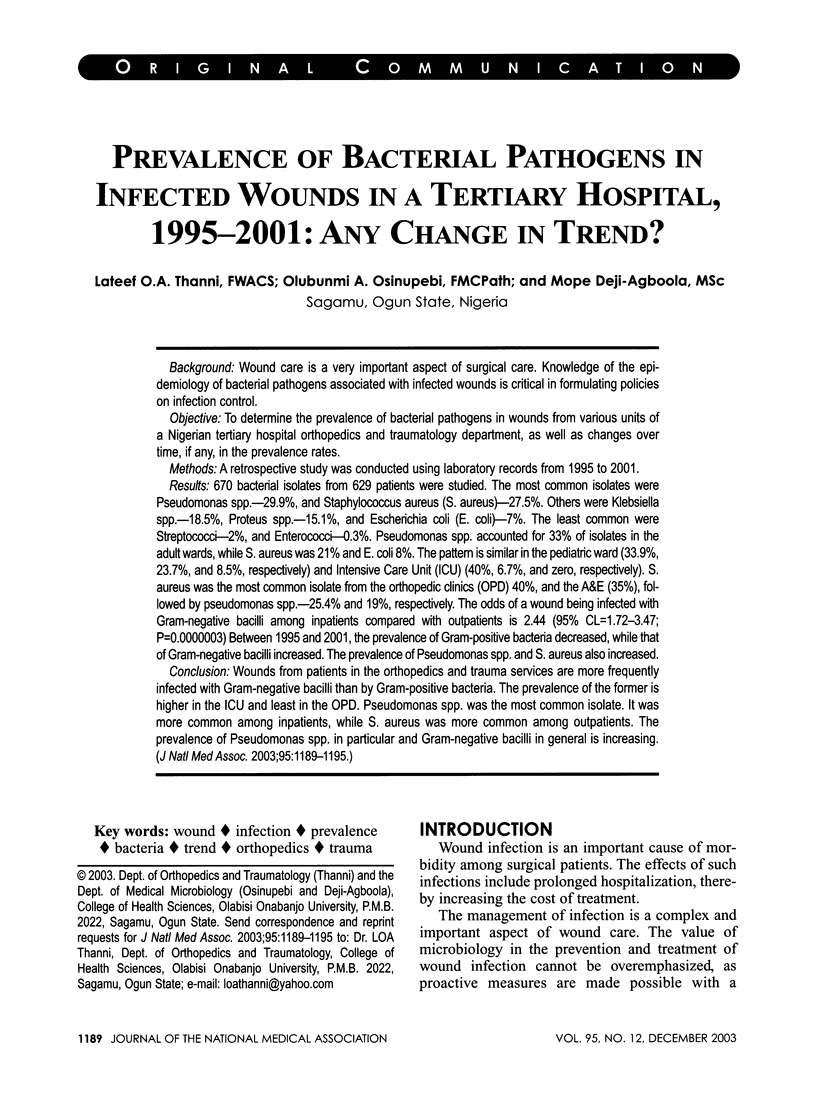
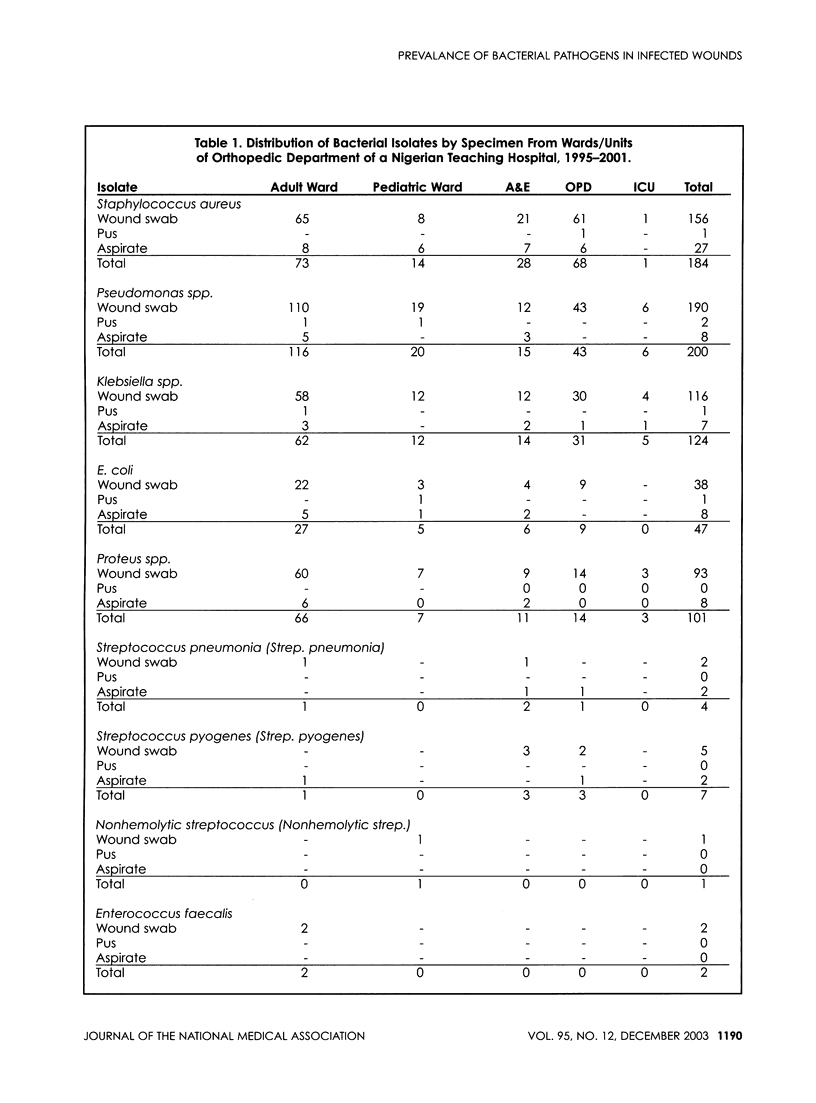
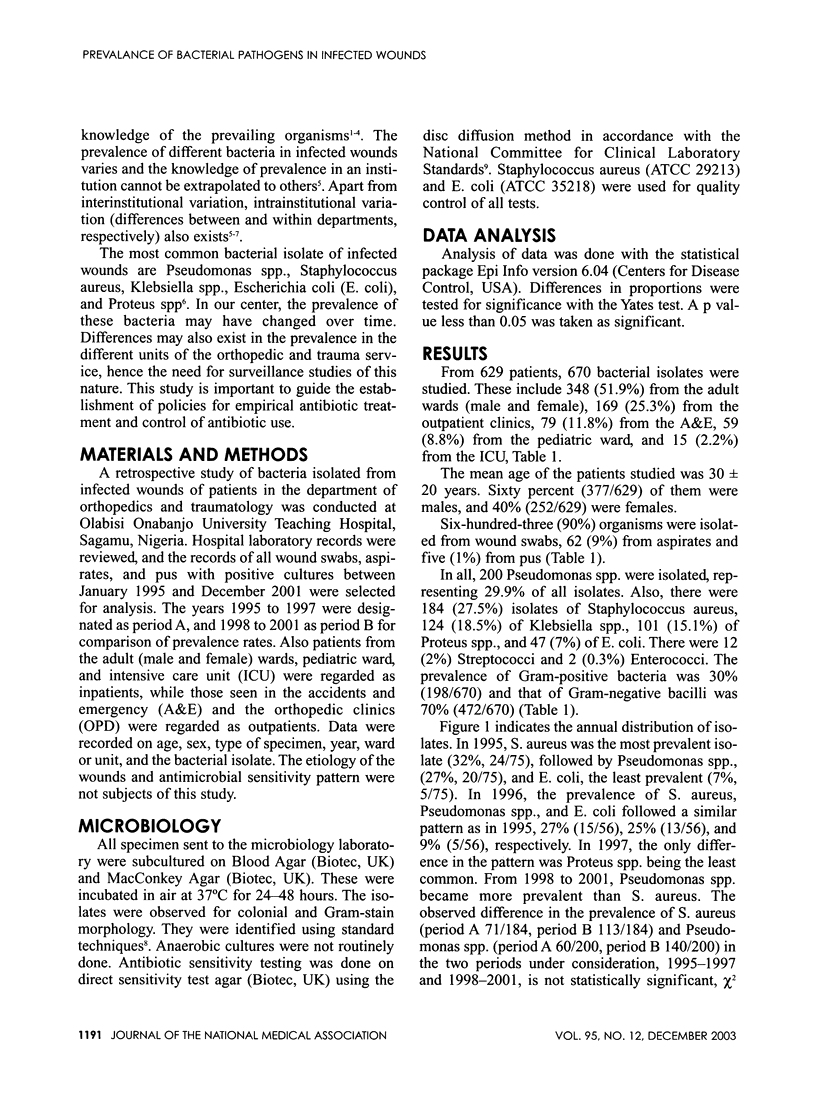
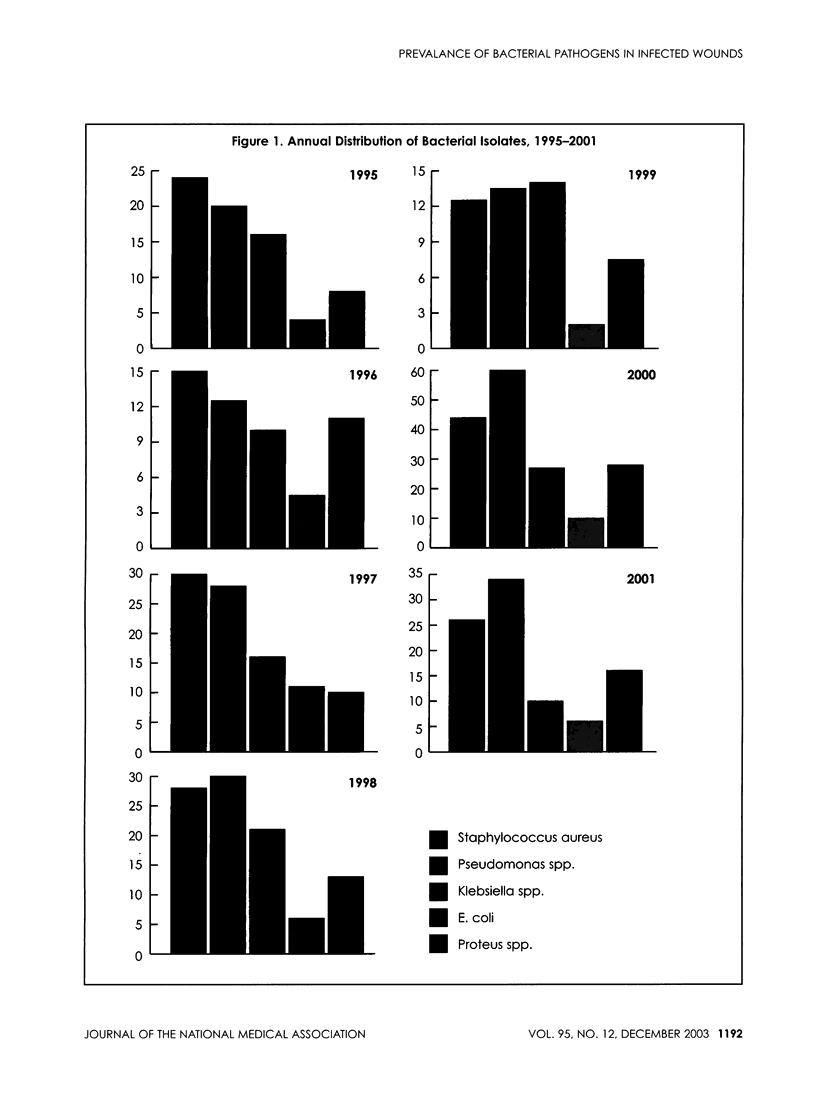
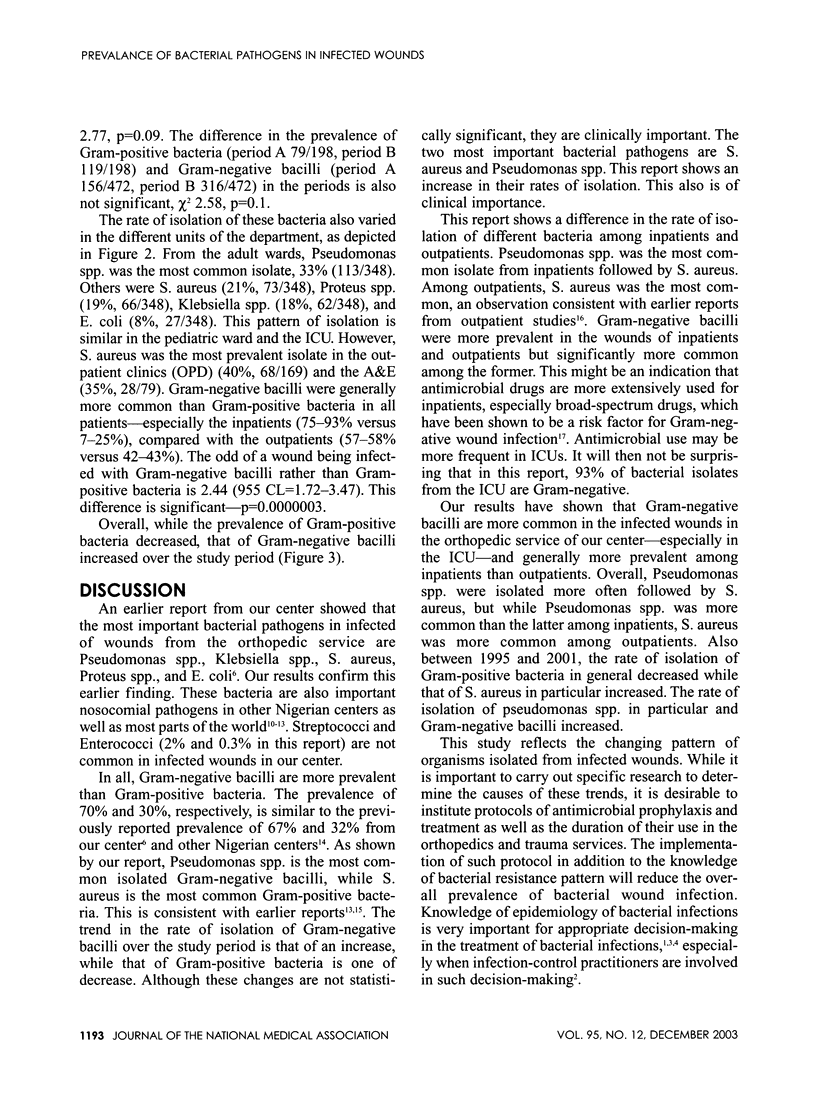
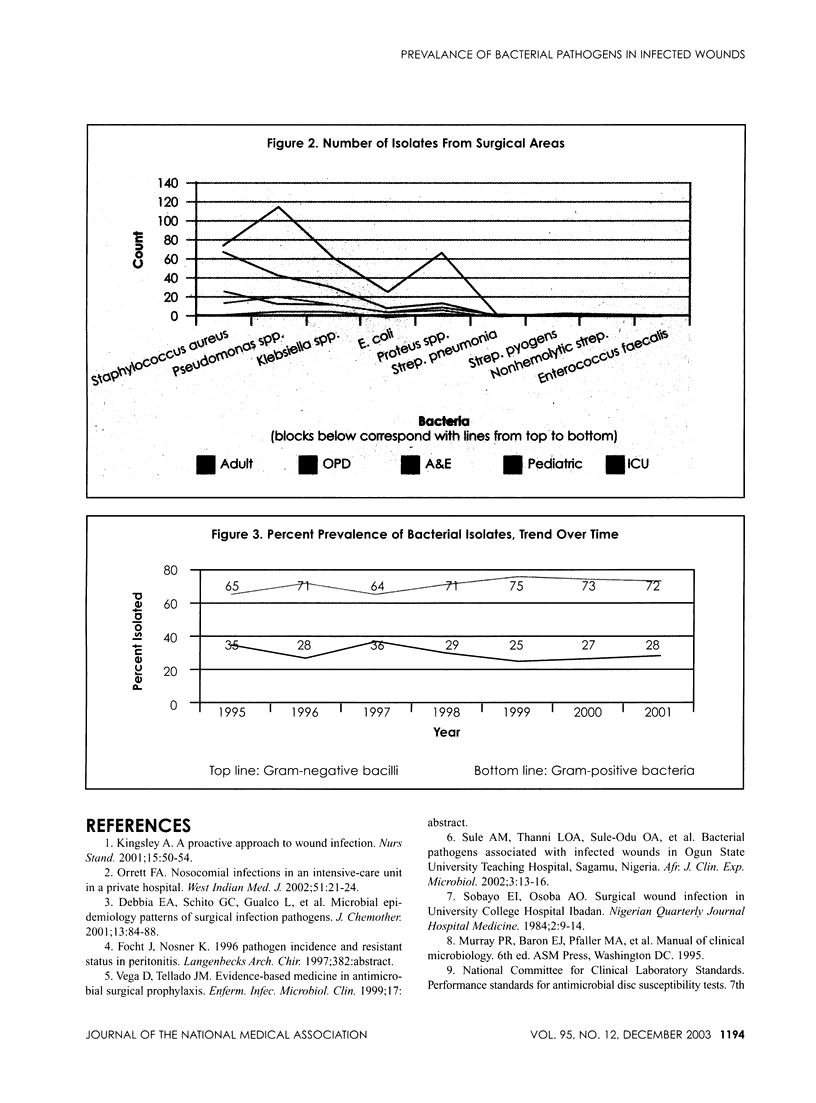

Images in this article
Selected References
These references are in PubMed. This may not be the complete list of references from this article.
- Debbia E. A., Schito G. C., Gualco L., Tonoli E., Dolcino M., Marchese A. Microbial epidemiology patterns of surgical infection pathogens. J Chemother. 2001 Nov;13(SPEC)(1):84–88. doi: 10.1179/joc.2001.13.Supplement-2.84. [DOI] [PubMed] [Google Scholar]
- Kingsley A. A proactive approach to wound infection. Nurs Stand. 2001 Apr 11;15(30):50-4, 56, 58. doi: 10.7748/ns2001.04.15.30.50.c3012. [DOI] [PubMed] [Google Scholar]
- Mousa H. A. Aerobic, anaerobic and fungal burn wound infections. J Hosp Infect. 1997 Dec;37(4):317–323. doi: 10.1016/s0195-6701(97)90148-1. [DOI] [PubMed] [Google Scholar]
- Orrett F. A. Nosocomial infections in an intensive care unit in a private hospital. West Indian Med J. 2002 Mar;51(1):21–24. [PubMed] [Google Scholar]
- Otokunefor T. V., Datubo-Brown D. D. Bacteriology of wound infections in the surgical wards of a teaching hospital. West Afr J Med. 1990 Oct-Dec;9(4):285–290. [PubMed] [Google Scholar]
- Vatopoulos A. C., Kalapothaki V., Legakis N. J. Bacterial resistance to ciprofloxacin in Greece: results from the National Electronic Surveillance System. Greek Network for the Surveillance of Antimicrobial Resistance. Emerg Infect Dis. 1999 May-Jun;5(3):471–476. doi: 10.3201/eid0503.990325. [DOI] [PMC free article] [PubMed] [Google Scholar]



